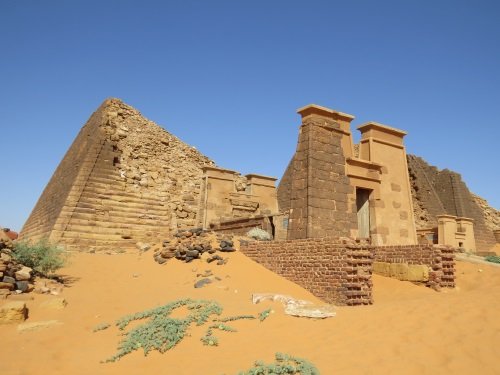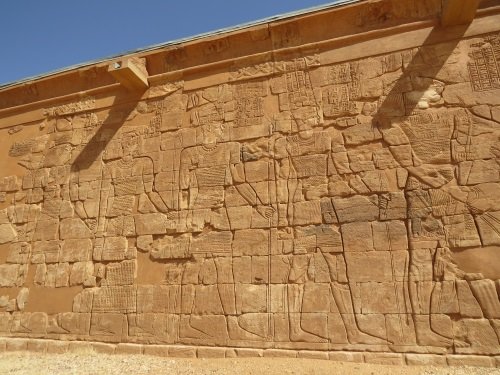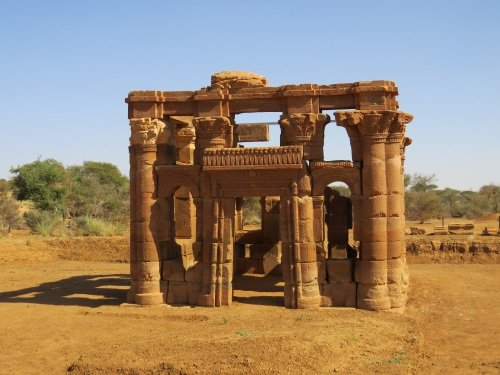First published: Sat 13 Dec 2014.
Els Slots
WHS #554: Magnificent Meroë
Comments
5 comments
Paul Tanner
10 years, 11 months ago (Dec 15, 2014)
It is amazing to think that, if ICOMOS had got its way, this wonderful site of Meroe wouldn't have been inscribed in 2011 but would have been deferred - probably for some years! And not just because of protection issues and poor management etc. I have just looked again at the ICOMOS evaluation and it didn't consider that the case had been made out on ANY of the 4 criteria suggested by Sudan (2,3,4, and 5). It did concede that a case could be made out on 2 and 3 if certain things were done - better comparison analysis for instance - it had a bee in its bonnet about the lack of a Nile port as part of the nomination. Seems a classic example of ICOMOS not seeing the wood for the trees!
Although the 2011 WHC was not broadcast publicly I have access to some notes from the session. Sudan was perhaps lucky that the WHC included Egypt, Ethiopia, Jordan, Iraq, UAE and Bahrain! Egypt stated that it was a "deed of honour" to inscribe the site. Ethiopia said that the importance of Meroe could not be doubted. Bahrain - The site is exceptional. BRZ, CHINA, EGY, ETI, JOR, IRQ, MAL, NIG, UAE all proposed acceptance. France agreed and Egypt proposed that it be inscribed on all 4 criteria. A few face saving (to ICOMOS)recommendations were put in and it was done! It will be interesting to see how many of the recommendations actually get done.
Reply
Els
10 years, 11 months ago (Dec 15, 2014)
What I wondered about is the level of reconstruction of the "pylons" (votive chapels) and the Pyramids. In my pictures (see first above) one can clearly see what is the original and what is the reconstructed part (looks lighter, more smooth, concrete?). Also, 2 small pyramids have been erected among the original ones just to show how the complete ones looked like. To my untrained eye, the restoration at Mussawarat is done much more carefully.
Paul Tanner
10 years, 11 months ago (Dec 16, 2014)
Regarding Els's comments about the reconstructions which have taken place at Meroe. It might be of interest to see the changes which have been brought about at Meroe in recent years by such (re)building work. I attach a couple of photos taken around 75 years apart but from a very similar viewpoint! The first is a B+W photo which I have scanned from Volume 6 of a book published c1930 +/- by Fleetway Press titled "Lands and Peoples". The second is a photo I took in Dec 2005. I did not of course realise at the time that an old book I owned would have a photo taken from almost the same viewpoint! My later photo shows the very large number of pylons which have been "constructed" in front of the pyramids - together with the 2 "new" pyramids mentioned by Els. ICOMOS commented that "Conservation works to the pyramids and temples have involved more reconstruction (in the Burra Charter sense of introducing new material), than in situ stabilisation or restoration (where new material is not introduced) or true anastylosis."
<img src="/img/blog/meroeklein1.jpg" width=600> <img src="/img/blog/meroeklein2.jpg" width=600>
Clyde
10 years, 11 months ago (Dec 19, 2014)
Extremely interesting review and incredible comments and photos showing the site before and after reconstruction! I've added this site to my personal Top 100 places I would like to visit :)
ellakropkacom.blogspot.com
10 years, 11 months ago (Jan 1, 2015)
I have never been in this place - but thanks to your description, I m sure it will be my next place worth to visit.
Regards, El



